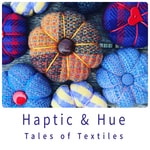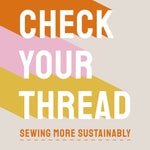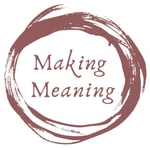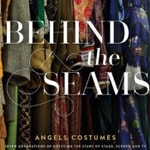Haptic & Hue – Details, episodes & analysis
Podcast details
Technical and general information from the podcast's RSS feed.

Haptic & Hue
Jo Andrews
Frequency: 1 episode/29d. Total Eps: 57

Recent rankings
Latest chart positions across Apple Podcasts and Spotify rankings.
Apple Podcasts
🇬🇧 Great Britain - societyAndCulture
03/03/2025#95🇨🇦 Canada - design
27/02/2025#3🇨🇦 Canada - arts
27/02/2025#65🇬🇧 Great Britain - design
27/02/2025#3🇬🇧 Great Britain - arts
27/02/2025#42🇺🇸 USA - design
27/02/2025#5🇺🇸 USA - arts
27/02/2025#86🇫🇷 France - design
27/02/2025#94🇨🇦 Canada - design
26/02/2025#2🇨🇦 Canada - arts
26/02/2025#38
Spotify
No recent rankings available
Shared links between episodes and podcasts
Links found in episode descriptions and other podcasts that share them.
See allRSS feed quality and score
Technical evaluation of the podcast's RSS feed quality and structure.
See allScore global : 53%
Publication history
Monthly episode publishing history over the past years.
Elizabeth Wayland Barber & The Age of String
Season 6 · Episode 52
jeudi 5 septembre 2024 • Duration 35:37
Exactly thirty years ago a book came out that changed the way we think about textiles and fibre and the role they’ve played in the human story. Women’s Work: The First 20,000 Years by Elizabeth Wayland Barber became a best seller. What she said was revolutionary. Until then people thought that textiles were a by-product of civilisations and that processes like weaving were around five or six thousand years old. Wayland Barber was the first person to understand that they are central to the development of human society, and she said, spinning and weaving were far older than we realised and went back to the beginnings of human social development. She coined the phrase The String Revolution and suggested the Stone Age would have been better called the Age of String.
Elizabeth Wayland Barber’s book: Women’s Work: The First 20,000 Years with its radical ideas, put textiles at the heart of the human story. It played a major role in creating a new generation of expert textile archaeologists and in getting the subject taken seriously. She helped make it possible for them to search for ancient fibre and textiles and, crucially, to understand that what they were seeing wasn’t detritus or trash but something precious that has a great deal to tell us about human beings and what they are capable of. She was also one of the first people to give us a way to value the work of women in pre-historic societies.
To celebrate the book’s 30th anniversary a new edition has been published with an updated afterword by Wayland Barber. This episode of Haptic & Hue is devoted to a rare interview with Elizabeth Wayland Barber in which she tells us how she came to write the book in the first place and the ideas that lay behind it.
For more information about this episode and details of the discount on the book please go to https://hapticandhue.com/tales-of-textiles-series-6/
America’s Cotton Feed Sacks: And How They Changed The World
Season 6 · Episode 51
jeudi 6 juin 2024 • Duration 42:57
The American cotton feed sack is the stuff of legend. From the 1850s onwards it was skilfully repurposed by women across America into all kinds of garments and household goods. By the late 1930s when it became highly patterned, it's estimated that more than 3 million Americans were wearing feed sack clothing. Out of necessity, it was made into dresses and shirts, quilts and curtains, sheets, mattress covers, pyjamas, and even undergarments.
Today feed sacks are valued by collectors and makers in America, and there is a lively market in them. But these soft cotton sacks have a much wider story to tell us than that. They have played a role in creating one of the world’s legendary cricket teams, they have saved a nation from the brink of starvation and in this episode of Haptic & Hue, we tell the incredible story of how a flour sack re-united a family with the something created by the grandmother they lost in in the Holocaust.
For pictures of the feedsacks talked out in this episode and more information about the contributors please go to https://hapticandhue.com/tales-of-textiles-series-6/
The People's Art - Material and The Modern Masters
Season 5 · Episode 42
jeudi 7 septembre 2023 • Duration 43:50
Have you ever wanted a Picasso on your walls – or maybe a Joan Miro, a Chagall, or perhaps a Raoul Dufy? For a time in the mid-50s in America you could buy work by these artists for just a few dollars: that's a few dollars a yard, because these were fabrics and not original paintings – but they were beautifully designed, sophisticated, and elegant.
As peace crept back after World War Two there was an intense hunger for new design. After five long years of uniforms, and sacrifice, people wanted something interesting to wear, and colourful fabrics to decorate their homes with. In America manufacturers were quick to turn their machines from military production to domestic demand.
This episode of Haptic & Hue is about how fresh and fashionable textiles were amongst the first items people were able to enjoy in the post-war period. It focuses on a short period when manufacturers turned to established artists, like Picasso, Raoul Dufy, Marc Chagall and Miro, to help them create brilliant new textiles. It looks in particular at Daniel B Fuller’s attempt to build what he called “A Museum Without Walls’ with his Modern Masters series of textiles in the 1950s.
It is also about what grew out of that, and tells the story of a young artist, unknown at the time, who worked for these same textile producers as a pattern designer, using his experience and skills to change the face of twentieth century art.
For more information, a full transcript, and further links, https://hapticandhue.com/tales-of-textiles-series-5/
The Tangled Tale of Tartan
Season 5 · Episode 41
jeudi 1 juin 2023 • Duration 41:30
Who doesn’t love a good tartan? It is everywhere from high fashion catwalks to shooting parties on winter hillsides, from military uniforms on parade to much-loved old sofas. It is at home in the humblest of cottages and the most splendid of royal palaces. It has a kaleidoscope of different uses and meanings. It is one of the most recognised patterns on earth, a global textile, visible almost everywhere.
But tartan is much more than a pattern, it is a fabric of contradiction and surprise. It holds many meanings, often simultaneously. It can represent the establishment and the power of the state, and at the same time signify rebellion and treachery. It can be an emblem of enslavement and oppression, or it can represent comfort, family, and home. Its meanings are as diverse as its many patterns.
In this episode of Haptic & Hue’s Tales of Textiles, we look at where tartan comes from and how it acquired its many meanings and controversies, and why some people love it and others hate it. Tartan is a textile of duality, able to hold many ideas within its simple grid design. It has a history that has spread out across the world and taken a sense of what it means to be Scottish with it.
But there is more than history to tartan: we also hear from a bespoke kilt-maker, who designs and registers her own tartans. She creates modern tartans able to embrace new definitions of identity and community and expand far beyond the Highland glens they first sprung from.
All of this has been put into context by the first exhibition in living memory about Tartan in Scotland itself, which opened in April 2023 at the Victoria and Albert Museum in Dundee, which we went to see as part of making this episode.
For more information, a full transcript, and further links, https://hapticandhue.com/tales-of-textiles-series-5/
A Dance to The Music of Time
Season 5 · Episode 40
jeudi 4 mai 2023 • Duration 39:06
This is the tale of how textiles played a central part in one of the great cultural and artistic upheavals of the last century, helping to bring about a change that was to reach deep into many lives, influencing fashion, interior design, illustration, art, and dance.
The Ballet Russe, gathered together by the mercurial figure of Serge Diaghilev in the early part of the twentieth century, was revolutionary in almost everything it did. The dancers, the music, the choreography, the sets, and the costumes astonished audiences – no one had seen anything like it before. The ballets became so popular that the costumes were copied by fashion designers and began to appear on the street.
The Ballet Russe was such a phenomenon that artists like Matisse and Picasso were happy to design for it, joining in-house artists like Bakst and Goncharova. Today, over a hundred years later, very little survives of the incredible performances given across Europe and America by the company, except the glorious music and the wonderful costumes.
These are often battered and bruised by a life on the road – they are far from pristine, stained with sweat and makeup, repaired and remade, but they have extraordinary power and wonderful stories to tell us, of where they were made and how they were used to change our ideas about dance and culture.
For more information, a full transcript, and further links, https://hapticandhue.com/tales-of-textiles-series-5/
A Sliver of Deep Blue Cloth
Season 5 · Episode 39
jeudi 6 avril 2023 • Duration 49:23
Warning: This podcast and the text below uses terms considered offensive and inappropriate today.
An extraordinary sample of indigo cloth has been found in a British record office which is thought to be a rare surviving fragment of fabric used to clothe enslaved people in the Caribbean and North America. The Haptic & Hue team of Jo Andrews and Bill Taylor was alerted to its existence in early January. We travelled to Derbyshire to see it and realised from a note on the back that we were looking at a piece of so-called ‘slave’ cloth, handwoven in Yorkshire in 1783. Millions of yards of this fabric were handmade in Britain and Ireland and sent to the plantations for nearly two hundred years, but until now none was known to have survived.
This episode of Haptic & Hue unravels the story-threads of this tiny piece of cloth which begin on the upland moors of Yorkshire, and takes us to America and the Caribbean, but also involve Wales, the Lake District, Ireland, Scotland, Germany, Poland, Russia, and the Baltic. The different light that textiles cast on this history show us how profits from the system of slavery were part of the everyday lives of workers and landowners all over Britain and Europe and didn’t just benefit a few rich plantation owners.
For more information, a full transcript, and further links, https://hapticandhue.com/tales-of-textiles-series-5/
No Costume? No Carnival!
jeudi 2 mars 2023 • Duration 36:38
It’s Carnival season, time to take to the streets for a party and see the spectacle. But Carnival is about so much more than that. At its heart is the idea that with costumes and masks, people can become shapeshifters, and transform themselves for a short period into someone else. Carnival is the work of a community and a chance for the powerless and the poor to be free for a day and claim equality with the rich and powerful. Each Carnival is different and takes its traditions and ideas from its own culture and the needs of its own people.
This episode looks at how different Carnivals developed and how textiles and masks play a central role in the political ideas behind them. It starts in Venice a thousand years ago as the poor were allowed to let off steam once a year. It crosses the Atlantic as the rich plantation owners brought Mardi Gras to the Caribbean, and saw it creatively developed by the enslaved and the poor into a series of glorious feasts of costume, music, and dance. It tracks Carnival as it was brought to Britain by Caribbean migrants as a celebration of their culture and community. And in all of these, it thinks about how textiles and clothing play a central role.
If you would like to see a full script of this episode, pictures of the carnival traditions discussed in this podcast, or discover links to further information about the topics discussed you can find all this information at www.hapticandhue.com/listen.
Is the Needle Mightier Than the Sword?
jeudi 2 février 2023 • Duration 44:30
The little needle is one of the oldest tools in existence. We know that human beings began to use them more than sixty thousand years ago. Needles, and the textiles that came later have changed humanity completely and helped to make modern society what it is. But until recently very little attention has been paid to them. The contribution that textiles and the tools that surround them have made to our lives has been only dimly understood. This is changing as a new breed of archaeologist – textile archaeologists take centre stage and in doing completely alter our understanding of how humanity developed.
In this episode of Haptic & Hue, we talk to one of the world’s most eminent textile archaeologists, Margarita Gleba. The evidence that she and others are piecing together for the first time from precious ancient textiles tell us new stories about how human beings organised their families, farms, towns, and cities, waged war and traded, how they expressed ideas of status and identity in clothing and how they used textiles in every corner of their lives.
Some of the greatest mysteries of our existence remain to be unlocked and their secrets may lie in the textiles that have not yet been properly analysed or researched. Listen to Margarita Gleba as she takes us on an expert’s tour of the deep past and with her knowledge of textiles begins to sketch in some of the gaps.
If you would like to see a full script of the episode or discover links to further information about the topics discussed here you can find all this information at www.hapticandhue.com/listen.
Coarse Shifts and Fine Silks
Season 4 · Episode 36
jeudi 5 janvier 2023 • Duration 41:03
Clothes are a window to our identity – they tell others who we are, what we believe in, and whether we are rich or poor, powerful or powerless. They also tell us a great deal about who someone is, whether they are tall or short, skinny or full-bodied, and what sort of life they lead, one of leisure or one of unremitting hard work. These clues make garments and textiles a wonderful way to understand the people of the past, what their lives were really like, and who they were.
This episode is about the clothes of a community, the community that lived at Mount Vernon in America when it was the home of George Washington and his wife Martha. George is a hero to Americans as the general who commanded the Revolution against the British and went on to become the first president. But what do his clothes tell us about him as a living, breathing person? His estate, Mount Vernon was not just home to him and his family - more than 300 people lived and worked on five farms there. Too often the focus of researchers and historians in the past has been on the textiles and fabrics of the rich and powerful, but clothes can tell us a good deal too about the poor and dispossessed and we can also look at the fabrics and the textiles that were used to dress everyone at Mount Vernon, from the Washingtons themselves to their field workers and labourers.
If you would like to see a full script of the episode or discover links to further information about the topics discussed here you can find all this information at www.hapticandhue.com/listen.
Stitches by Candlelight
jeudi 1 décembre 2022 • Duration 35:16
Mary Queen of Scots is one of the most written about women in history. We think we know her well – but here’s a new account that re-interprets her life from the point of view of the textiles she wore and the embroideries she stitched. It casts a completely different light on her difficult existence and brings her fully into focus as a living, breathing human being. Here is a renaissance queen displaying her power in violet taffeta and purple velvet, who wore silver to mourn, black to display her statesmanship, and white for innocence and piety.
The book is Clare Hunter’s Embroidering Her Truth, Mary Queen of Scots and the Language of Power, and it is Haptic & Hue’s choice for our Book of the Year 2022. In this special end-of-year episode, Jo talks at length to Clare about her research and what it told her about Mary. It sets Mary in context both as a consumer of elite textiles and also as an embroiderer during her long captivity. At her death, Mary left over 300 embroideries, many of which can still be seen both in Scotland and England, which she used to tell her own story. They give us an insight into her state of mind and the messages she was trying to convey to the outside world.
You can find a full script of this podcast, pictures, links and show-notes at www.hapticandhue.com/listen. Embroidering Her Truth, Mary Queen of Scots and the Language of Power can be bought in the Haptic & Hue UK bookshop. Haptic & Hue earns a small commission on this at no extra cost to you.









